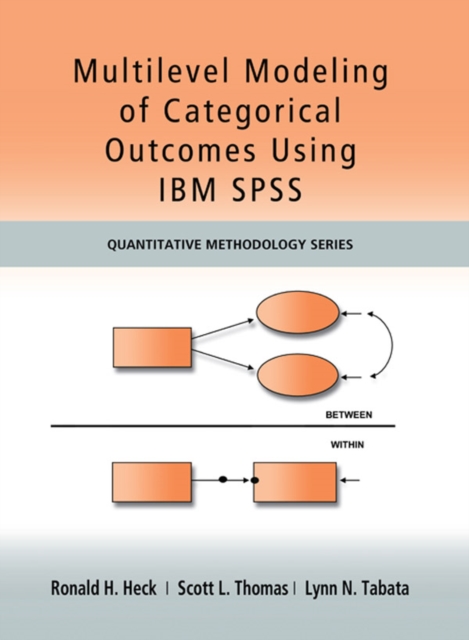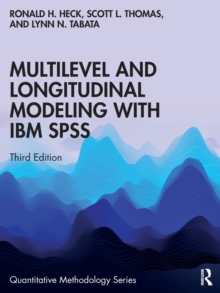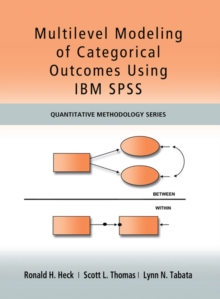
Multilevel Modeling of Categorical Outcomes Using IBM SPSS EPUB
by Ronald H Heck, Scott Thomas, Lynn Tabata
Part of the Quantitative Methodology Series series
EPUB
Description
This is the first workbook that introduces the multilevel approach to modeling with categorical outcomes using IBM SPSS Version 20. Readers learn how to develop, estimate, and interpret multilevel models with categorical outcomes. The authors walk readers through data management, diagnostic tools, model conceptualization, and model specification issues related to single-level and multilevel models with categorical outcomes. Screen shots clearly demonstrate techniques and navigation of the program. Modeling syntax is provided in the appendix. Examples of various types of categorical outcomes demonstrate how to set up each model and interpret the output. Extended examples illustrate the logic of model development, interpretation of output, the context of the research questions, and the steps around which the analyses are structured. Readers can replicate examples in each chapter by using the corresponding data and syntax files available at www.psypress.com/9781848729568.
The book opens with a review of multilevel with categorical outcomes, followed by a chapter on IBM SPSS data management techniques to facilitate working with multilevel and longitudinal data sets. Chapters 3 and 4 detail the basics of the single-level and multilevel generalized linear model for various types of categorical outcomes. These chapters review underlying concepts to assist with trouble-shooting common programming and modeling problems. Next population-average and unit-specific longitudinal models for investigating individual or organizational developmental processes are developed. Chapter 6 focuses on single- and multilevel models using multinomial and ordinal data followed by a chapter on models for count data. The book concludes with additional trouble shooting techniques and tips for expanding on the modeling techniques introduced.
Ideal as a supplement for graduate level courses and/or professional workshops on multilevel, longitudinal, latent variable modeling, multivariate statistics, and/or advanced quantitative techniques taught in psychology, business, education, health, and sociology, this practical workbook also appeals to researchers in these fields. An excellent follow up to the authors' highly successful Multilevel and Longitudinal Modeling with IBM SPSS and Introduction to Multilevel Modeling Techniques, 2nd Edition, this book can also be used with any multilevel and/or longitudinal book or as a stand-alone text introducing multilevel modeling with categorical outcomes.
Information
-
Download - Immediately Available
- Format:EPUB
- Pages:456 pages
- Publisher:Taylor & Francis
- Publication Date:07/05/2013
- Category:
- ISBN:9781136672347
Other Formats
- PDF from £43.19
- Paperback / softback from £46.25
- Hardback from £135.00
Information
-
Download - Immediately Available
- Format:EPUB
- Pages:456 pages
- Publisher:Taylor & Francis
- Publication Date:07/05/2013
- Category:
- ISBN:9781136672347










